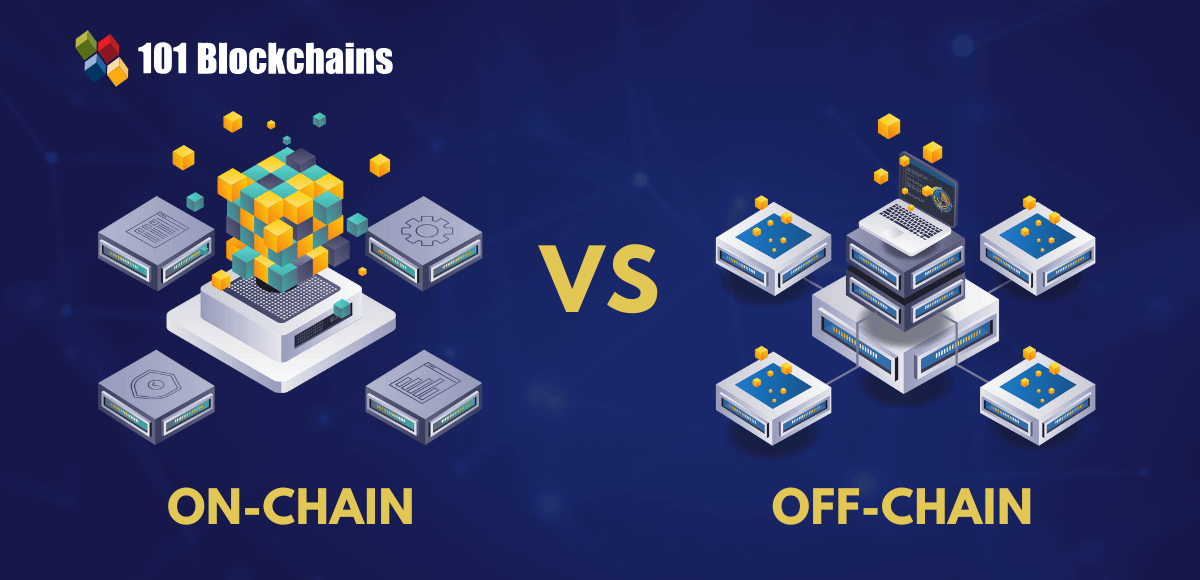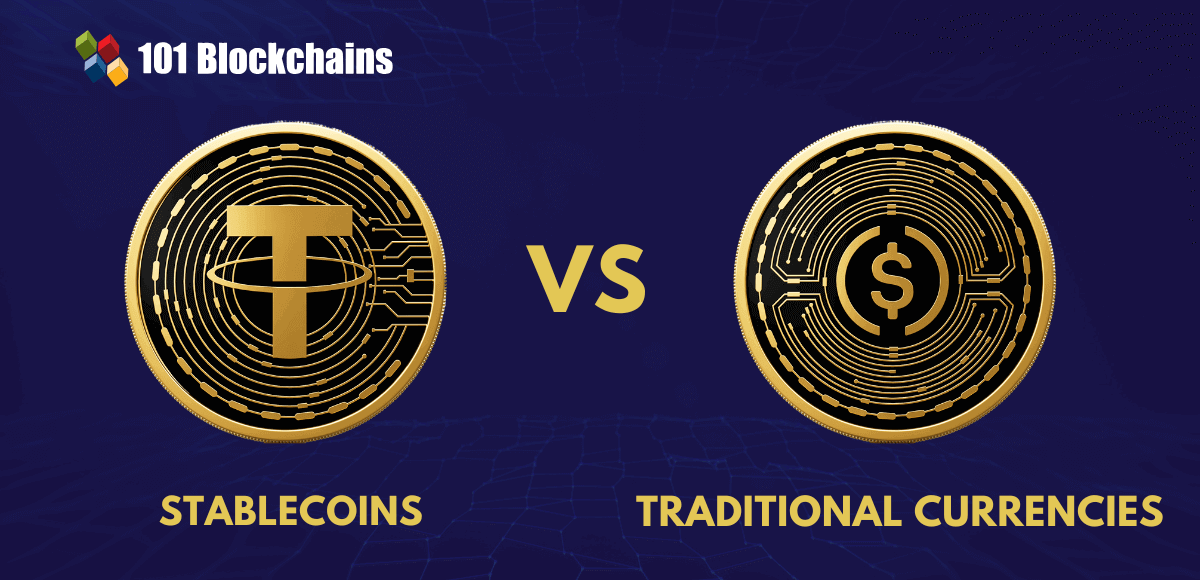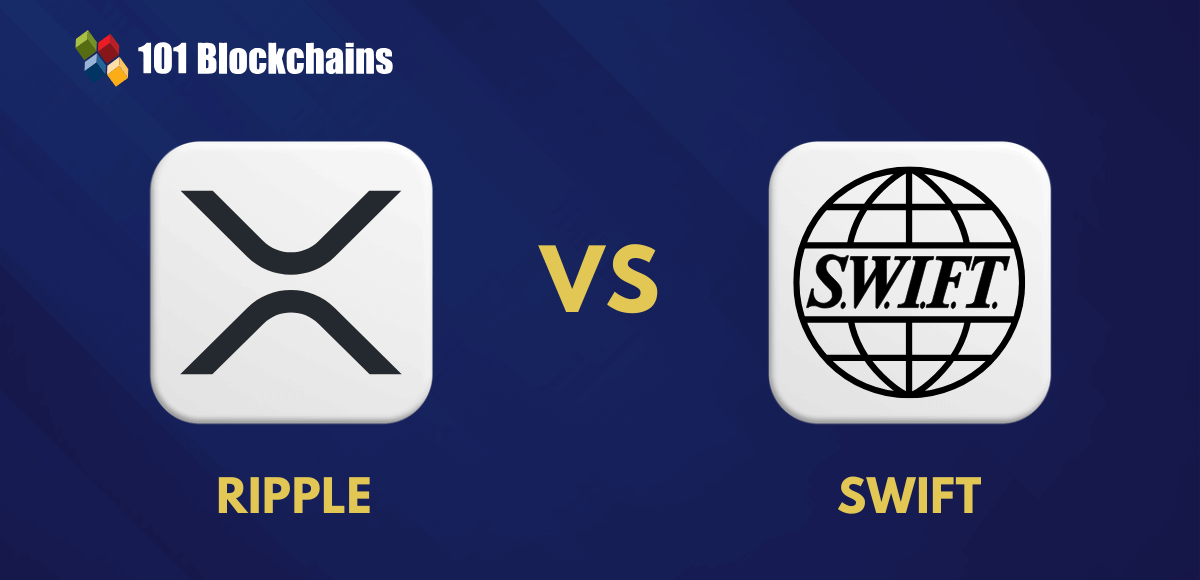Learn how blockchain truly works, master key definitions, and uncover what makes smart contracts so "smart." Dive into the fundamentals, gain valuable insights, and start your blockchain journey today!
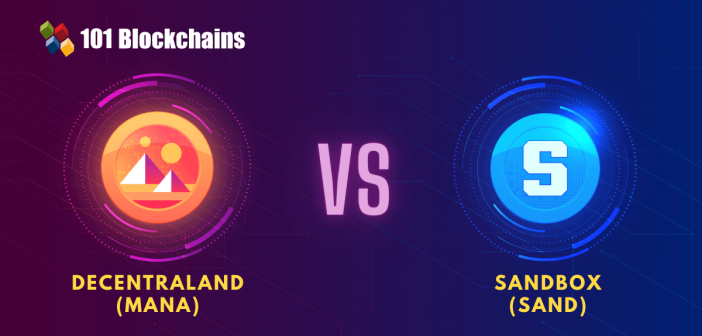
- Comparisons
James Howell
- on February 04, 2022
Decentraland (MANA) vs Sandbox (SAND) – Which Metaverse is the best?
Decentraland and Sandbox are the key terms in the metaverse domain. Let’s dive in to understand the differences i.e. Decentraland vs Sandbox.
The most prominent term you might come across in all discussions on technology in present times is the metaverse. While the whole tech ecosystem awaits the arrival of the metaverse in its totality, the definition of the metaverse is quite difficult. Think of it as the internet in the 1980s! The simple definition for metaverse is a three-dimensional virtual world where users can interact with each other and digital solutions as digital avatars.
Among all the hype surrounding the metaverse, the debate on Decentraland vs Sandbox has started gaining attention. Both of them are completely decentralized metaverse platforms without any governing entity. So, what are the differences between them and which one is better? Let us reflect on the differences between Decentraland and Sandbox in detail.
Aspiring to Become a Certified Metaverse Expert? Enroll in Certified Metaverse Professional (CMP) Certification Course Now!
Understanding the Two Popular Metaverse Platforms
The first thing you need for a sandbox vs Decentraland comparison is an outline of the definitions. Anyone following metaverse news closely must have come across the two top leaders in the space currently. Both of them have a lot of similarities, albeit with many significant differences. Let us start with a definition of both platforms to find out the answer to “what is better sandbox or Decentraland?” if there’s any.
Definition of Decentraland
The earliest pioneer in the metaverse space, Decentraland, started off in 2017 and is a completely immersive and engaging 3D metaverse. It focuses on enabling players to purchase plots of land alongside exploring the massive virtual universe. Decentraland features a diverse assortment of experiences for participants, such as games, casinos, galleries, concerts, and many others. As of now, it is the longest-running project in the metaverse space.
Decentraland started off with an ICO of $24 million, and it became available to the public in 2020. Users can create a wide variety of experiences on the different parcels of virtual real estate on the platform. You can find two distinct tokens associated with Decentraland, MANA, and LAND. MANA is the native token of the platform in compliance with ERC-20 standards, and users can burn MANA for acquiring LAND token, which follows ERC-721 standards. The MANA coin can work as payment for different avatars, wearables, products, and names on the Decentraland marketplace.
Want to get an in-depth understanding of metaverse concepts? Join Standard/Premium Plan and get free access to Metaverse Fundamentals Course Now!
Definition of Sandbox
The next important player, i.e., Sandbox, started off in 2011 as a blockchain-based virtual world and migrated to the 3D gaming platform in 2017. The virtual world allows users to build, play, exercise ownership and carry monetization of all their virtual experiences. One of the primary aims of Sandbox focuses on empowering artists, creators, and players in the blockchain community to develop the platform according to their imagination. Sandbox gives the ideal means for unleashing creativity in the development of the modern gaming ecosystem.
The project brings the best of NFTs and DAOs for empowering a consistently growing community of gaming enthusiasts. Sandbox follows an innovative play-to-earn model, which helps users in developing as gamers and creators. The platform offers a utility token, SAND, which is essential for conducting all transactions on the platform.
What are the key points one can find from definition of both metaverse platforms to build the Decentraland vs sandbox comparison?
First of all, MANA is ideal for businesses, individuals, and creators looking for a new artistic medium, sources of entertainment, and new business opportunities. It is one of the rapidly expanding projects leveraging DAO or Decentralized Autonomous Organization for governance. In addition, MANA token holders have control over the Decentraland domain.
On the other hand, Sandbox is a blockchain-based virtual world that uses a simple native token SAND for its operations. Users can build, create, sell and purchase digital assets and experiences on the platform while empowering blockchain-based gaming. Sandbox focuses largely on user-generated content alongside creating an ecosystem of players contributing to the development.
Aspiring to Become a Certified NFT Expert? Enroll in Certified NFT Professional (CNFTP) Course Now!
Differences between Sandbox and Decentraland
If you try to find what is better Sandbox or Decentraland, then you might struggle with only the basic definitions. You would find that both of them are metaverse platforms offering immersive 3D experiences. Users have the freedom to create, buy, sell and trade digital assets and experiences. However, both of them are considerably different in various aspects, especially with MANA vs SAND differences.
- For starters, take note that the existing market cap of MANA is around $5,736,097,349 while that of SAND is $4,528,715,461, placing Decentraland at an advantage.
- Another highlight of the MANA vs SAND comparison is their pricing. As of the time of writing, the value of one SAND is $3664, while that of MANA is $2452.
Learn the core concepts of Metaverse through Metaverse Flashcards
Decentraland vs Sandbox
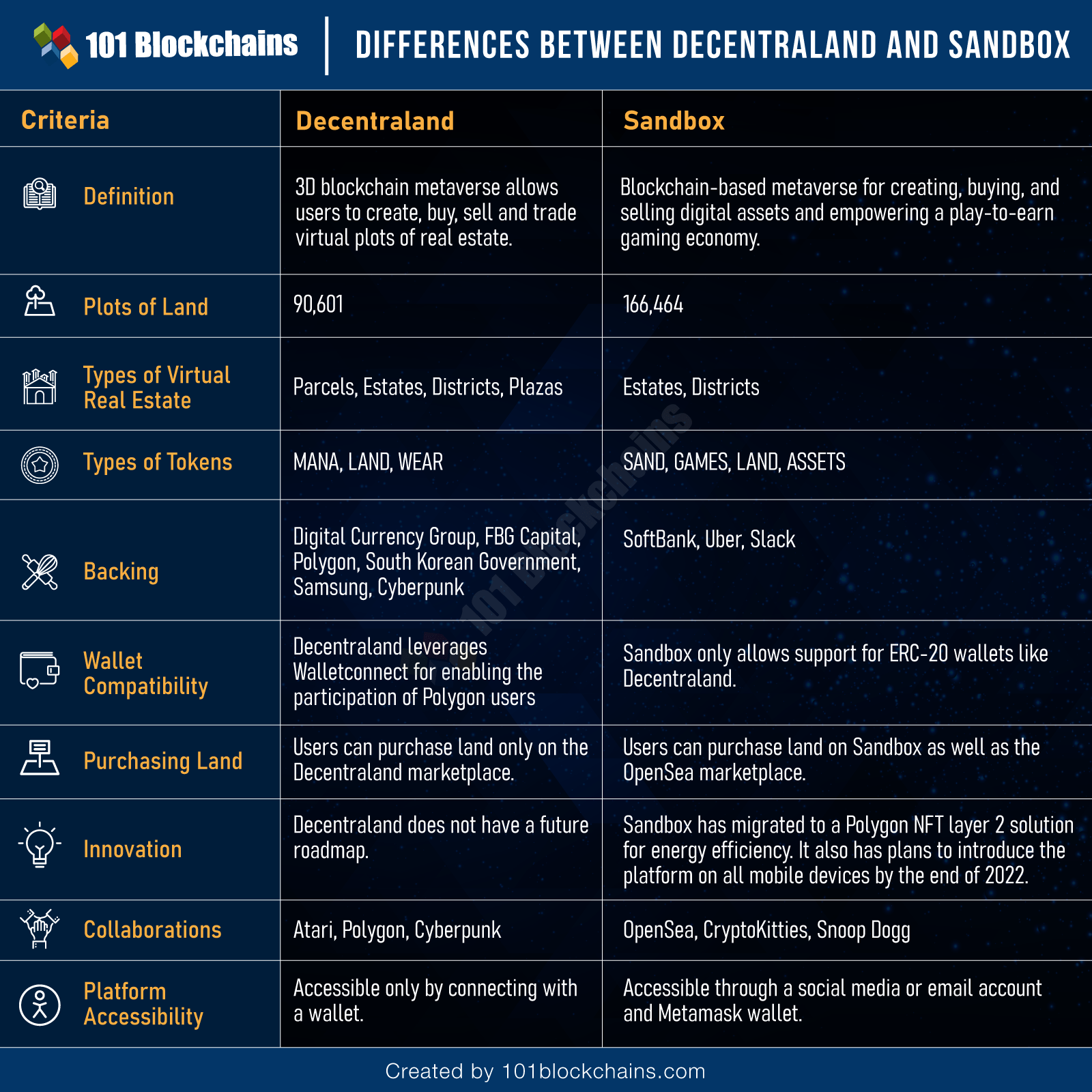
Please include attribution to 101blockchains.com with this graphic. <a href='https://101blockchains.com/blockchain-infographics/'> <img src='https://101blockchains.com/wp-content/uploads/2022/02/Differences-Between-Decentraland-and-Sandbox-5.png"' alt='Differences Between Decentraland and Sandbox='0' /> </a>
The differences in the value of the native tokens and market capitalization of the two metaverse platforms are not enough to determine the better choice. Let us dive further into the Sandbox vs Decentraland comparison in terms of various crucial factors as follows.
-
Way of Working
One of the foremost aspects of the Decentraland vs Sandbox comparisons is the way they work. If you look at them from a broader perspective, both of them appear to work in the same way. However, there is a lot to uncover when you dive deeper into the way of working of both platforms. Decentraland features 90,601 digital parcels of land on the platform.
All the parcels of virtual real estate come together in the form of individual parcels or estates featuring multiple parcels of land. It also has districts that have parcels with similar themes and plazas, which are untradeable parcels under community ownership. It offers three different types of tokens, MANA, LAND, and WEAR.
Sandbox offers 166,464 plots of virtual real estate and allows grouping of the plots into estates. Estates are under the ownership of one person, while districts come with ownership of two or more people. You can find four different types of tokens such as SAND, GAMES, LAND, and ASSETs on the Sandbox metaverse.
-
Age
The maturity of metaverse projects is also a significant factor in the Sandbox vs Decentraland debate. There is no reason to doubt that Decentraland is the obvious winner in terms of maturity. It was the first solution to claim metaverse as its core product and created a 3D blockchain metaverse. Decentraland offered the first working proof of concept and made it available to the public. On the other hand, Sandbox has only released an Alpha version to the public as of now.
Learn the fundamental technologies underlying metaverse platforms through Metaverse Skill Path
-
Backing
The comparison of MANA vs SAND would also refer to the support available for both platforms. Decentraland has many renowned firms at its back, such as Digital Currency Group, FBG Capital, and CoinFund. In addition, it has also entered into collaboration with Polygon, the South Korean Government, Cyberpunk, and Samsung.
Sandbox also has one of the biggest backers in SoftBank, a Japanese multinational conglomerate focused on investment management. With one of the largest investment companies in the world supporting it, Sandbox also enjoys the backing of many other renowned firms such as Slack and Uber.
-
Wallet Compatibility
The next important factor in comparing the two metaverse platforms would be wallet compatibility. Decentraland presently has an advantage over its competition. How? You can use any type of ERC-20 wallet in the marketplaces of both projects. On the other hand, Decentraland has recently introduced an improvement by bridging with Walletconnect. Therefore, it can allow Polygon users to participate in Decentraland.
-
Scalability
Scalability is a problem you can find with both Sandbox and Decentraland as they are based on the Ethereum blockchain. The capacity for scalability is limited for both platforms due to unstable tokens and the high gas fees. So, the large-scale adoption of both metaverse platforms can come across some setbacks due to a lack of scalability.
Excited to learn the basic and advanced concepts of ethereum technology? Enroll Now in The Complete Ethereum Technology Course
-
Purchasing Land
Virtual real estate is a common highlight in the Decentraland vs Sandbox comparisons. However, the opportunities for purchasing the virtual land on both platforms also define the user experience and differentiate both platforms. In this case, Sandbox offers better options for users to purchase virtual land by leveraging the OpenSea as well as the Sandbox marketplace. On the contrary, Decentraland allows users to purchase only from the MANA marketplace.
-
Innovation
Pace of development is also an important criterion for differentiating between Sandbox and Decentraland. Both the platforms have been making rapid advancements by ensuring the development of new features. However, Sandbox stands out as a winner by migrating to Polygon NFT layer 2 solutions for using almost 100 times lesser energy in comparison to Ethereum.
-
Collaborations
The most crucial highlight for finding “which one is better Sandbox or Decentraland,” would be the collaborations of the platforms. Association with trustworthy and big names can also drive the adoption of metaverse platforms like the two in question here. Decentraland has partnered with Atari, Cyberpunk, and Polygon. On the contrary, Sandbox has entered into collaborations with many popular names such as OpenSea, CryptoKitties, The Walking Dead, Snoop Dogg, and many others.
-
Platform Accessibility
Another important highlight for differentiating between Sandbox and Decentraland would be the ease of accessing the platforms. In terms of platform access, Sandbox stands as a clear winner. It provides many accessible options for entering the platform, such as social media or email account or through a Metamask wallet. However, Decentraland allows access only through connecting a wallet.
-
Future Plans
The future plans for development also play a major role in defining Sandbox vs Decentraland differences clearly. Sandbox has a clear vision for its future development focused on introducing the platform on mobile devices. In addition, the platform also plans on bringing the platform to consoles such as PlayStation and Xbox. Furthermore, the platform also plans on featuring around 5000 games by the end of 2023.
On the other side of the spectrum, Decentraland does not follow a specific roadmap. As a matter of fact, the team defines the decisions which seemingly have a value associated with them. They are planning to introduce celebrities, creators, and brands to the platform alongside NFT advertisements and drops soon.
Start learning Blockchain with World’s first Blockchain Career Paths with quality resources tailored by industry experts Now!
Final Words
The differences in the Decentraland vs Sandbox comparison present a balanced overview for both platforms. You can see how it is difficult to find out which decentralized metaverse is a better alternative as of now. Sandbox is still in the Alpha mode, while Decentraland has already introduced the working proof of concept.
On the other hand, Sandbox presents better accessibility and has some popular names backing it alongside offering better graphics. However, both of them have a long way to go in the evolution of the larger decentralized metaverse. Learn more about each platform in detail for understanding how both of them can contribute to the future of the metaverse project.
*Disclaimer: The article should not be taken as, and is not intended to provide any investment advice. Claims made in this article do not constitute investment advice and should not be taken as such. 101 Blockchains shall not be responsible for any loss sustained by any person who relies on this article. Do your own research!



